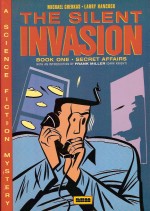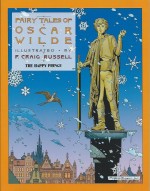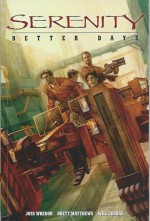
By Peter O’Donnell & Enric Badia Romero (Titan Books)
ISBN: 978-1-78329-858-7
Modesty Blaise and her lethally adept, knife-throwing, compulsively platonic partner Willie Garvin gained fearsome reputations as infallible super-criminals heading underworld gang The Network before retiring young, rich and healthy. With honour intact and their hands relatively clean, they cut themselves off completely from careers where they made all the money they would ever need and far too many enemies – a situation exacerbated by their heartfelt conviction that killing was only ever to be used as a last resort.
When devious British Spymaster Sir Gerald Tarrant sought them out they were slowly dying of boredom in England. The wily old bird offered them a chance to have fun, get back into harness and do a bit of good in the world. They jumped at his offer and have been cleaning up the dregs of society in their own unique manner ever since …
From that tenuous beginning in ‘La Machine’ (see Modesty Blaise: the Gabriel Set-Up) the dynamic duo went on to crush the world’s vilest villains and most macabre monsters in a perpetual storm of tense suspense and inspirational action for nearly forty years…
The inseparable associates debuted in The Evening Standard on 13th May 1963 and over the passing decades went on to star in some of the world’s most memorable crime fiction, all in approximately three panels a day.
Creators Peter O’Donnell & Jim Holdaway (who had previously collaborated on Romeo Brown – a lost strip classic equally deserving of its own archive albums) produced a timeless treasure trove of brilliant graphic escapades until the illustrator’s tragic early death in 1970, whereupon Spanish artist Enric Badia Romero (and occasionally John Burns, Neville Colvin and Pat Wright) assumed the art reins, taking the partners-in-peril to even greater heights.
The series has been syndicated world-wide and Modesty has starred in 13 prose novels and short-story collections, several films, a TV pilot, a radio play, an original American graphic novel from DC and nearly one hundred comic strip adventures until the strip’s conclusion in 2001.
The serial exploits are a broad blend of hip adventuring lifestyle and cool capers, combining espionage, crime, intrigue and even – now and again – plausibly intriguing sci fi and supernaturally tinged horror genre fare, with ever-competent Modesty and Willie canny, deadly, yet all-too-fallibly human defenders of the helpless and avengers of the wronged…
Reproduced in stark and stunning monochrome – as is only right and fitting – Titan Books’ superbly scrupulous chronological serial re-presentations of the ultimate trouble-shooters resume here, with O’Donnell & Romero offering four more masterpieces of mood mystery sand mayhem only pausing for intriguing Introduction ‘Modest Morality’: an insightful overview of the wonder woman’s ethics and motivation from author and incurable fan-addict Simon Barnes (How to be a Bad Birdwatcher, The Sacred Coombe, Ten Million Aliens).
The suspenseful dramas open with Ripper Jax (originally run in The Evening Standard from May 4th to October 2nd 1995), wherein Modesty and Willie repay an old blood-debt to psychometricist and antiquarian bookseller Mr. Haley. The old gentleman has a daughter who’s a bit of a wild child and now she’s been kidnapped by psychotic, knife-throwing gang boss Ripper Jax.
The thoroughly nasty flesh-peddler is after two million pounds hidden by a thief who is beyond his usual means of coercion and persuasion, but for a man who can find things by mental divination all things are possible…
Naturally the Dynamic Duo leap to the distraught dad’s defence, but a little pre-raid intelligence-gathering around the villain’s medieval castle in Ireland not only reveals the huge odds arranged against them but also that it might not be a simple abduction and trade that’s going on…
Moreover, Jax soon knows the troubleshooters are coming but doesn’t care. He’s always wanted to test his knives and skill against the legendary bladesman Willie Garvin…
The scene shifts to the antipodes for The Maori Contact (3rd October 2nd 1995 – March 1st 1996) as Willie helps some old friends finish a magnificent, hand-carved traditional Waka. The 100-foot native war-canoe is the crowning triumph of British sculptor Jason Nash and his wife Carol, but they have no idea of the problems brewing…
In London, Modesty is just learning from Jason’s uncle Sir Gerald Tarrant that Carol has inherited millions of pounds from a crazy relative she had no notion of, even as Willie and Jason foil an abduction attempt which leaves one kidnapper dead and poor hubby with blood on his hands…
Rushing out on the first jet to New Zealand, Modesty and Tarrant are unaware that Carol’s sole rival for the inheritance is already on his way ahead to them, having hired one of the few criminal organisations in the world undaunted by the lethal reputations of Blaise and Garvin.
Not prepared to leave it at that, Carol’s unknown enemy also recruits an army of local riff raff to play back-up, but has completely underestimated the devious duo’s experience in whittling down overwhelming odds and uncanny ability to find helpful allies in the strangest places…
A startling glimpse into Modesty’s criminal days running The Network underpins Honeygun (March 4th to August 2nd 1996), revealing how her life was saved by a merciless mercenary killer.
Sadly the striking Eurasian assassin was too depraved and kill-hungry to be allowed to join Modesty’s gang and left in a huff with a solemn promise that Modesty owed her a debt which would one day be called in…
Years later that obligation becomes a deadly burden when Willie and “the Princess†are relaxing in their Tangiers home. Modesty is spending time with her occasional paramour Dr. Giles Pennyfeather when Honeygun resurfaces, orchestrating a heist which goes bloodily awry.
Trapped in the Kasbah with the cops closing in, the sociopathic killer calls in her debt and Modesty reluctantly spirits her away before the police can swoop…
Blaise’s misgivings over the rescue are soon proved true when Honeygun kills an Israeli diplomat and his chauffeur and subsequently abducts Giles from his hospital to remove a bullet from one of her henchmen wounded in the exchange of fire…
Torn by guilt, Modesty resolves to stop Honeygun for good. Before long she and Willie have tracked the crazy killer and her increasingly anxious army of hired guns to a derelict Roman fort and begun the perilous task of extracting Giles and cutting down the odds. With the worst storm in decades brewing, Modesty has to deal with one final hiccup when her darling doctor refuses to leave without his critically injured patient…
This catalogue of compelling crookedness and catastrophic crime-busting concludes with a gripping yarn wherein Modesty and Willie rush to the rescue of old friends Dinah and Stephen Collier in the raw heart of the Guatemalan jungle.
The professor and his blind, psychic wife were working for Blaise’s occasional lover John Dall, divining potential drill sites for the billionaire’s oil company when they were taken by a gang of rebels led by the charismatic maniac Durango (August 5th 1996 to January 3rd 1997)…
Rapidly swinging into action, Blaise and Garvin go native and attempt to infiltrate the band in the manner that’s worked so well so often, but things go south swiftly when Durango turns out to be old Network adversary Lazaya who instantly recognises them and decides to ransom them instead….
With everything going wrong the partners in peril have to think fast, act boldly and ruthlessly exploit every advantage to save their friends and themselves, but as always the final arbiter is a study in applied violence…
These are incomparable capers crafted by brilliant creators at the peak of their powers; revelling in the sheer perfection of an iconic creation. Unforgettable shock and suspense-stuffed escapades packed with sleek sex appeal, dry wit, terrific tension and explosive action, the stories grow more appealing with every rereading and never fail to deliver maximum impact and total enjoyment.
Modesty Blaise © 2014 Associated Newspapers/Solo Syndication.
Modesty Blaise: Ripper Jax is available for pre-order now and will be published on March 4th 2016.











